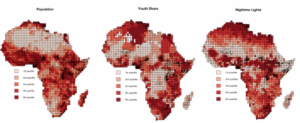Despite accounting for only 7% of the world’s population, 10% of the world’s conflict-exposed population is comprised of young people living in rural areas. Per year, over 350 million rural youth live in conflict-affected countries. Despite already experiencing lower endowments, which are likely to be further eroded by violence, there is a general lack of research focussing specifically on young people living in the rural areas of conflict countries. From wider literature, we know that conflict is a cause of adversities across a range of economic and non-economic indicators. When young people experience violence in consecutive life stages, adversities from one stage – such as poor education accumulation – are carried forward into subsequent stages – such as the transition to employment. Exposure to violence increases infant mortality, reduced birthweight, harms child health, damages human capital accumulation and interacts negatively with labour market opportunities. We also establish key knowledge gaps remain, especially when it comes to understanding the programmes that can mitigate the damage conflict exposure could inflict upon rural youth. There is, therefore, an urgent need to understand how and why exposure to conflict harms the lives of rural youth, and perhaps more importantly, how it harms those lives differently from those of other socio-demographic groups. There is also a need for the design of, and learning from, programmes that are specifically targeted at protecting and empowering rural youth during the post-conflict phase.
Publication Details
- Year of Publication: 2019
- Region/s: Global · Sub-Saharan Africa
- Theme/s: Human Development · Shocks & Livelihoods · Violence & Peacebuilding
- Research Topic/s: Poverty & Inequality · Violence & Conflict · Youth & Children
- Method/s: Cross-sectional Data Analysis · Literature Review · Spatial Data Analysis
- DOI: https://www.ifad.org/en/web/knowledge/publication/asset/41490026
Suggested Citation
Baliki, G., Brück, T., Ferguson, N. T. N., & Stojetz, W. (2019). Rural youth in the context of fragility and conflict. 54 IFAD Research Series







